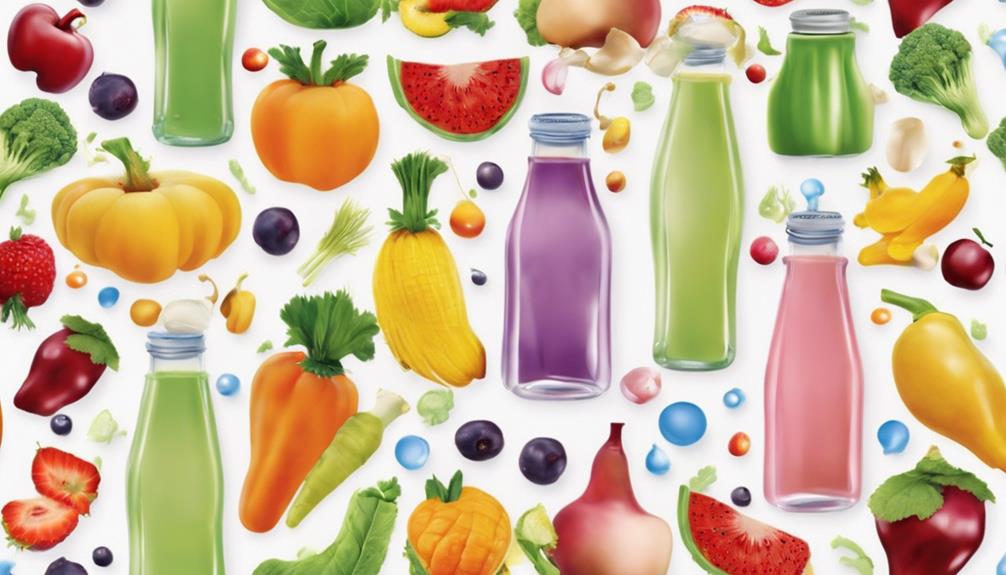As parents, we often find ourselves wondering when is the right time to change our baby’s diet. Moving on from formula is a big decision.
Knowing when to stop feeding formula is important for your child's development, but how do you determine the perfect moment? Let's explore the key factors and steps to make a smooth and successful shift for your little one.
Key Takeaways
- Transition to cow's milk or toddler formula around 12 months for balanced nutrition.
- Monitor milk intake (2-3 cups/day) while introducing varied solid foods.
- Gradually introduce cow's milk in a sippy cup alongside formula to aid in adjustment.
- Consult pediatrician for personalized guidance on weaning process and dietary needs.
Signs Your Baby Is Ready
When your baby begins showing interest in solid foods and can sit up without support, it may be a sign that they're ready to stop feeding formula. Shifting from formula to solid foods typically occurs around 6 months of age.
Keep an eye out for signs like your baby grabbing at food, opening their mouth eagerly for a spoon, or showing curiosity during family meals. It's important to make sure that your baby is getting all the necessary nutrients from solid foods before completely halting formula feeding.
Every baby is different, so consulting with your pediatrician is important. They can provide guidance tailored to your baby's individual needs and stage of development. Your pediatrician will offer valuable advice on when and how to make this important change smoothly and successfully.
Trust your instincts as a parent, but also lean on the expertise of your healthcare provider to support you through this exciting phase of your baby's growth.
Transitioning to Solid Foods

As your baby starts to display interest in solid foods and can sit up independently, it's an opportune time to begin incorporating a variety of healthy options into their diet alongside formula feeding. During this changing period, here are some key points to keep in mind:
- Introduce solid foods: Begin introducing solid foods around 6 months alongside formula to change gradually.
- Varied diet: By 7-8 months, aim for a varied diet of healthy foods to complement formula feeding and provide essential nutrients.
- Consult healthcare professional: Consult a healthcare professional for specific concerns or conditions during the changing period to make certain your baby's needs are met.
Introducing Other Nutritious Drinks
Considering your baby's growing needs and development, we recommend gradually introducing other nutritious drinks as they shift from formula feeding. It's important to shift from formula to a variety of drinks to guarantee they receive a balanced diet. Here are some tips to help you navigate this phase:
| Nutritious Drinks | Guidelines |
|---|---|
| Water | Introduce water as the primary drink after 12 months to prevent tooth decay. |
| Milk | Limit milk intake to 16-24 ounces per day to avoid displacing solid food nutrients. Offer milk in a regular cup for better oral health. |
| Sugary Drinks | Avoid sugary drinks like juice and flavored milk to maintain a balanced diet. |
| Consult Pediatrician | Consult with a pediatrician for personalized advice on shifting from formula to other drinks. |
Smooth Formula to Milk Transition

To facilitate a smooth switch from formula to milk for your toddler, gradually introduce cow's milk around their first birthday. Changing can be challenging, so here are some tips to help make the process easier:
- Introduce milk in a sippy cup: This can help toddlers adjust to both the new taste of cow's milk and the different drinking method, making the switch more manageable.
- Mix formula with milk: For picky eaters, mixing formula with cow's milk initially can ease the change by maintaining some familiarity while introducing the new taste.
- Guarantee a balanced diet: While monitoring your toddler's milk intake (2 to 3 cups a day), remember to incorporate solid foods to ensure they receive all the necessary nutrients for their growth and development.
Navigating the Weaning Process
We guide parents through the weaning process, supporting a gradual shift from formula to solid foods and drinks. When babies reach around 12 months old, it's time to ponder shifting from formula or breast milk to toddler formula or whole milk. This phase marks an important period in the weaning process as the baby's nutritional needs evolve. A balanced diet consisting of solid foods is essential to meet the growing infant's nutritional requirements during this change. The gradual shift guarantees the baby's comfort and aids in adapting their digestive system to new foods and drinks.
As caregivers, it's important to understand that babies need a combination of nutrients from different food sources to thrive. Moving off formula should be a gentle process, starting no earlier than 12 months to support the baby's overall health. By introducing a variety of solid foods and gradually reducing formula intake, parents can navigate the weaning process smoothly, making sure the baby's nutritional needs are met as they shift to cows milk or toddler formula.
Frequently Asked Questions
When Should I Stop Formula Feeding My Baby?
We should stop formula feeding our baby when they show signs of readiness for solid foods, around 6 to 12 months. It's important to consult healthcare professionals for personalized guidance. Shift gradually by offering diverse healthy foods alongside formula in a cup.
How Do You Transition a Baby off Formula?
When weaning a baby off formula, we gradually introduce solid foods alongside formula, decreasing formula amounts as solid food consumption increases. Aim to completely wean off formula by 12 months. Offer formula in a cup for independence.
When Should You Stop Bottle Feeding?
When we cease bottle feeding depends on our child's age, development, and the guidance of healthcare providers. We gradually move to cups around 12 months for dental health and speech development. Sippy cups at 6-9 months empower toddlers.
When Should You Throw Away Formula?
We should discard formula if it's been left out for over an hour or stored in the fridge for more than 24 hours. It's important to follow these guidelines to safeguard our baby's health and safety.
Conclusion
As we wrap up this guide, remember that moving from formula to solids and whole milk is a journey filled with milestones and new experiences.
Trust your instincts, follow your baby's cues, and seek guidance from your pediatrician along the way.
Remember, this process may feel like climbing Mount Everest, but with patience and perseverance, you'll reach the summit of successfully weaning your little one off formula.
Happy feeding!









